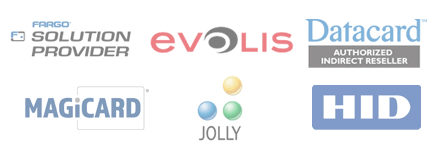 Loading... Please wait...
Loading... Please wait...Shop by Product
Blog - smart cards
Top 5 Uses for Smart Cards
Posted on 15th Oct 2013
A “smart card” is defined as any pocket-sized card with an embedded computer chip. They are generally made of plastic, although
since 2009 a Japanese company has manufactured reusable financial smart cards made from paper. Smart cards can

serve many purposes, from identification to data storage, and the industry is expected to grow rapidly in the years to come.
The following are five of the most popular current applications for smart cards:
1) Banking & Retail
Some of the most common uses for smart cards are ATM cards, credit cards and debit cards. Many of these cards are “chip and PIN” cards that require the customer to supply a four- to six-digit PIN number, while others are known as “chip and signature” cards, needing only a signature for verification.
Other financial and retail uses for smart cards include fuel cards and public transit/public phone payment cards. They can also be used as “electronic wallets” or “purses” when the chip is loaded with funds to pay for small purchases such as groceries, laundry services, cafeteria food and taxi rides. Cryptographic protocols protect the exchange of money between the smart card and the machine, so no connection to a bank is needed.
2) Healthcare
With health care data rapidly increasing, smart cards assist with maintaining the efficiency of patient care and privacy safeguards. The cards allow medical facilities to safely store information for a patient’s medical history, instantly access the information and update it if needed and reduce health care fraud. Instant patient verification provides for immediate insurance processing. In addition, smart cards enable compliance with government initiatives, such as organ donation programs.
3) ID Verification & Access Control
Smart cards can also be used to verify identity in places like business offices and universities. Multifunction, microprocessor-based smart ID cards can incorporate identity with access privileges. For companies with higher security needs, a smart card can be a tamper-proof device to store information, such as a user’s picture or fingerprints. All U.S. government facilities and many corporations have incorporated contactless readers as an access point to their facilities, and some have included a biometric component. Expect the use of smart ID cards to grow in the future.
4) Mobile Communications
For digital mobile phones, smart cards can also be used as identification devices. These cards are known as Subscriber Identity Molecules (SIM) cards. Each SIM card has a unique identifier that manages the rights and privileges of each subscriber and makes it easy to properly identify and bill them.
5) Computer & Network Security
Microsoft Windows, new versions of Linux and Sun Microsystems have begun using smart cards as a replacement for user names and passwords. Understanding that Public Key Infrastructure (PKI)-enhanced security is needed, a smart card badge is becoming the new standard. Using smart cards, users can be authenticated and authorized to have access to specific information based on preset privileges.
Do you use smart cards?




